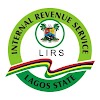Stanbic IBTC Bank Nigeria PMI®: Inflationary pressures remain elevated in November
Rates of inflation in the Nigerian private sector remained elevated in November, further hampering business operations. There were some signs of improvement midway through the final quarter, however, as new orders returned to growth and the decline in output softened. That said, employment was down and companies continued to lower their purchasing amid steep price pressures. The headline figure derived from the survey is the Stanbic IBTC Purchasing Managers’ Index™ (PMI®). Readings above 50.0 signal an improvement in business conditions on the previous month, while readings below 50.0 show a deterioration.
The headline PMI posted below the 50.0 no-change mark for the fifth consecutive month in November to signal a further deterioration in business conditions in the private sector. That said, at 49.6 the latest reading was up from 46.9 in October and pointed to only a marginal decline. The less pronounced deterioration in business conditions in part reflected a renewed expansion in new orders, which rose slightly following a solid fall in October. Although there were some tentative signs of demand improving, companies reported that customers were often deterred by high prices. The inflationary environment and muted demand conditions meant that business activity continued to fall, the fifth month running in which that has been the case.
Muyiwa Oni, Head of Equity Research West Africa at Stanbic IBTC Bank commented: “The Nigerian private sector activities deteriorated further in November, albeit at a less pronounced rate relative to October. This less pronounced deterioration was primarily due to the return to growth of new orders in November, after having decreased solidly in October. Notably, new orders have now risen in three of the past four months, although the latest expansion was only modest. Some panelists saw signs of demand picking up, but others reported that high costs again acted to deter customers. Elsewhere, higher energy prices, increases in the cost of raw materials, and lingering currency weakness continue to lead to intensification of price pressures in November.
Thus, input prices increased at a substantial rate again during November, with the pace of inflation only slightly lower than that seen in October and remaining one of the sharpest on record. In Q3:24, the Nigerian economy grew by 3.46% y/y relative to 3.19% y/y growth in Q2:24. Notably, the non-oil sector grew by 3.37% y/y in Q3:24 from 2.80% y/y in Q2:24, albeit with uneven performance across the sub-sectors that make up the non-oil sector. ICT, finance & insurance, trade, road transport, and agriculture were the key growth drivers of the non-oil sector in the review period. Nonetheless, there appears to be a disconnect between the composite PMI and non-oil GDP growth in recent quarters, with this disconnect more pronounced in Q3:24 when the PMI for the quarter weakened to 49.6 points – a sign of deterioration in business conditions – while non-oil GDP growth was strong in the review period.
Historically, the non-oil GDP growth is mildly negative whenever the composite PMI is below 50-points no-change mark. We expect the economy to maintain the Q3:24 growth momentum in Q4:24, supported by festive-induced increase in economic activity and sustained improvement in crude oil production. Indeed, based on the November PMI survey results, companies reported some tentative signs of demand improving although some customers were deterred by high prices. On balance, we estimate the economy to grow by 3.24% y/y in real terms in Q4:24 and adjust our 2024 growth estimate upward to 3.2% (previously: 3.1%).” The latest reduction was only marginal, however. Sector data pointed to increases in output in agriculture and manufacturing but decreases in wholesale & retail and services. Purchase costs rose rapidly again in November amid currency weakness and higher prices for fuel and raw materials. Although slowing slightly for the second month running, the pace of inflation remained elevated. Staff costs were also up as companies helped their workers with higher living and transportation costs.
In response to increasing input costs, output prices also continued to rise at a substantial pace midway through the final quarter of the year. The muted demand environment and high prices for inputs led companies to reduce both their purchasing activity and stocks of inputs in November. Employment was also down, thereby ending a six-month sequence of job creation. The pace of reduction was only marginal, however, as the overall fall in staffing levels was limited to just services firms. Companies continued to lower their backlogs of work, while there was also a lack of pressure on capacity at suppliers. Quiet road conditions, prompt payments and competition among vendors also helped result in a further shortening of suppliers' delivery times. Business confidence continued to wane in November and hit a fresh record low. Some firms remained optimistic in the outlook for output, however, amid business expansion and investment plans.



.png)


.gif)
0 Comments